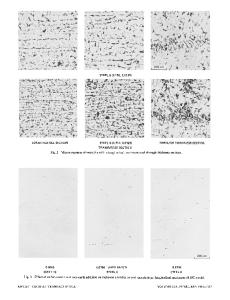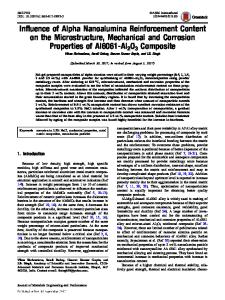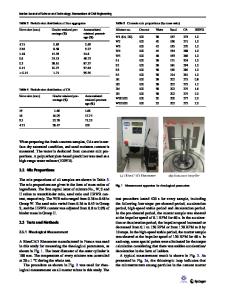Influence of yttria-stabilized zirconia content on rheological behavior and mechanical properties of zirconia-toughened
- PDF / 4,186,360 Bytes
- 13 Pages / 595.276 x 790.866 pts Page_size
- 72 Downloads / 360 Views
Influence of yttria-stabilized zirconia content on rheological behavior and mechanical properties of zirconia-toughened alumina fabricated by pastebased stereolithography Maoshan Li1, Weiwei Liu1, Jianbin Nie1, Chuanyang Wang1, Wenli Li1,*, and Zhanwen Xing1,*
1
School of Mechanical and Electric Engineering, Soochow University, Suzhou 215021, People’s Republic of China
Received: 15 June 2020
ABSTRACT
Accepted: 22 October 2020
Improvement of the mechanical properties of advanced ceramics fabricated by additive manufacturing has been a prerequisite for their wide applications. In this work, zirconia-toughened alumina (ZTA) parts with a variety of yttriastabilized zirconia (YSZ) content were fabricated by stereolithography (SL) technology, based on the appropriate self-holding ability of the viscoelastic paste and application of conformal contactless support strategy. Combining microstructural analysis and mechanical assessment by three-point bending and indentation tests, the influence of YSZ content on the SL process and subsequent mechanical properties was discussed. The results showed that the optimized matching of flexural strength (477.54 MPa) and fracture toughness (6.56 MPa m1/2) was acquired by ZTA ceramic with a YSZ content of 20 wt%. When the YSZ content reached 30 wt%, agglomerations formed and led to a negative influence on the properties of ZTA ceramics. It is confirmed that the combined contribution from the addition of YSZ on the improvement of mechanical property and influence of the SL process should be synthetically considered during the design of ceramic paste feedstock for such additive manufacturing.
Ó
Springer Science+Business
Media, LLC, part of Springer Nature 2020
Handling Editor: David Cann. Maoshan Li and Weiwei Liu contributed equally to this work.
Address correspondence to E-mail: [email protected]; [email protected]
https://doi.org/10.1007/s10853-020-05494-6
J Mater Sci
Introduction Owing to their excellent mechanical and biological properties, zirconia-toughened alumina (ZTA) ceramics have been well studied for recent years in a variety of applications, especially wear components and biomedical implants [1–4]. Traditional ceramic fabrication techniques, e.g., isostatic pressing, injection molding and slip casting [5–7], are difficult to directly manufacture complex products with high accuracy and efficiency. Such conventional techniques mentioned above consist of various steps, which totally take a long time along with a limited qualification rate. Meanwhile, subsequent subtractive manufacturing through machining is inevitable for those of isostatic pressing and slip casting, etc. Furthermore, due to the multiple steps, the time span between design, testing and implementation is hard to be shorted. Along with the development of additive manufacturing (AM) techniques for polymer and metal materials, several technologies for complex ceramic components have been exploited through layer-by-layer construction [8–13]. Particularly, stereolithography (SL) has received more
Data Loading...











